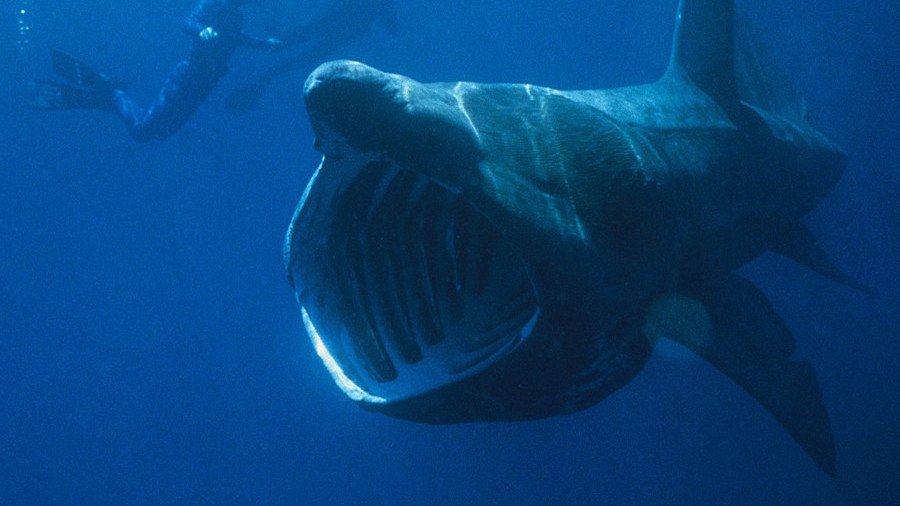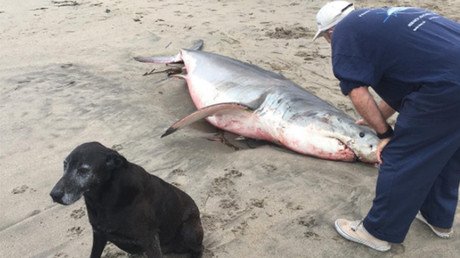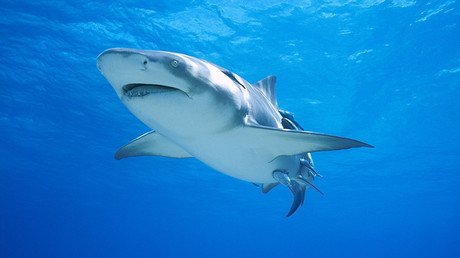Jawsome! School of 1,400 basking sharks spotted off US North Atlantic coast

Marine biologists have been left baffled by the appearance of large schools, comprised of up to 1,400 basking sharks, in the waters off the northeastern US.
The numbers were spotted by scientists from the National Oceanic and Atmospheric Administration (NOAA) while examining 40 years worth of aerial photographs. The study, published in the Journal of Fish Biology, found that multiple schools of basking sharks had gathered in the North Atlantic between 1980 and 2013. The groups ranged in size from 35 to 1,400.
READ MORE: 'Shocking’: One-in-three animals at Sea Life center died in one year
The find has astonished researchers. The basking shark has always been known as something of a loner and has rarely been seen congregating in groups. “Although the reason for these aggregations remains elusive, our ability to access a variety of survey data though the North Atlantic Right Whale Consortium Database and to compare information has provided new insight into the potential biological function of these rare events," NOAA researcher Leah Crowe said in a statement.
Dragged to death: Footage of shark tied to speedboat sparks criminal probe (VIDEO) https://t.co/LkFeb9uRKdpic.twitter.com/U9AQFCvMzs
— RT (@RT_com) July 27, 2017
Basking sharks are the world's second largest fish and can grow as long as 32 feet. They migrate huge distances and are often seen close to the water’s surface with their large mouths open to filter zooplankton, the sharks’ primary food source, from seawater. They are not considered a danger to humans.
The new study of the animals has helped lift the lid on how the sharks swim and feed. The day that 1,400 basking sharks, known as Cetorhinus maximus, gathered in waters off southern New England, it was found that there was a huge amount of zooplankton. Congregating in large numbers meant that the fish could create a collective suction through their open mouths. But feeding may not be the only reason for the gathering, with some scientists claiming that the sharks may be socializing or engaging in some kind of elaborate mating ceremony.














